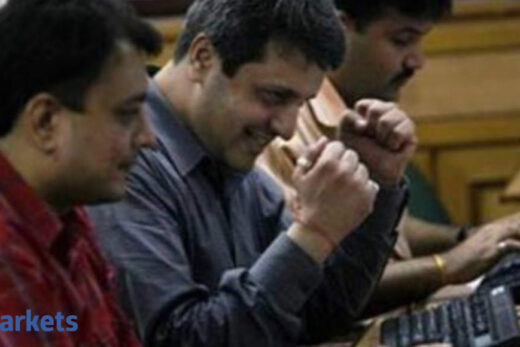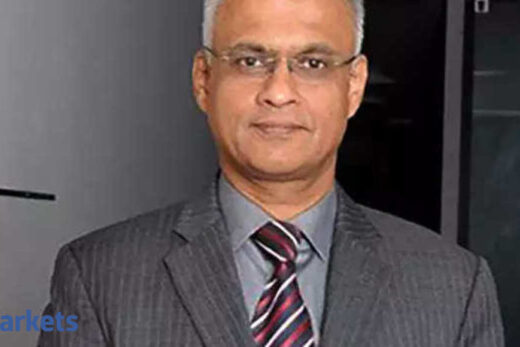We are seeing the Q4 GNPA ratio marginally increasing from the pro-forma GNPA of last quarter. Is there some stress in the non-individual loan book?
As far as the growth is concerned, I must tell you that the structural demand for housing in India will always be strong for a variety of factors – one is affordability, the other is the fact that we have a young population. Two-thirds of our population in India is less than 35 years and the average age of a first time home buyer typically is upwards of 35 years. Typically, the home buyer takes a loan at an age of around 38-39 years and with two-thirds of the population being below 35 years what that really means is two-thirds of the population has not even attempted to pick a house but over the next one, three, five years they will come over, there will be a need to buy a house, so structural demand for housing will always be there. If you see for the first quarter of the last year, the disbursements were slow. If we look at the split of our disbursements in the four quarters, the first quarter we did only 37% of what we have disbursed in the first quarter of the previous year. In the second quarter, we started seeing growth pick up post the lifting of the lockdown in late May and in the second quarter we did 95% of what we had disbursed in the second quarter of the previous year. So first quarter was 37% of the previous year’s disbursements, the second quarter was 95%.
From the third quarter, we started seeing a pick up compared to the previous year and growth was 100. We did 126%, meaning we grew our individual disbursements by 26% in the third quarter compared to the third quarter of the previous year and the four-quarter was extremely strong. In March, we had record disbursements. Disbursements in the month of March were the highest ever in history and we also saw record levels of applications, a record level of approvals, a record level of disbursements. I think this happened because people have been waiting on the sidelines for some time looking for the right opportunity to buy a house. The economy has started opening up in the sense that the people have started becoming more going about their day to day life. So, I think all of that taken together brought growth momentum back in a very big way. Also what COVID has done is that it has made it more necessary for people to look for bigger houses or houses with an extra room because if we have both husband and wife, working from home then obviously they need their own space, own privacy so, therefore, the need for larger homes.
Given the continued uncertainty around the second COVID wave, what kind of collections & growth trends are we picking at this point for the month of April?
It is too early to look at that comparison. If we were to look at April 2021 and compare it with let us say what it would have been in April of 2019 which is pre-COVID, it is not significantly different. The marginal impact would be there because of the second wave of COVID but it would not have been that significant anytime. Going forward obviously we will have to wait and watch but here you must understand that for a housing loan the average loan to value ratio is extremely low. When the first wave of COVID happened we did a very quick back of the envelope computation of what the average loan to value ratio for loans outstanding in the books would be and we have felt that at that time that it would be in the region between 40% and 45%. So there is a massive amount of equity that the individual has in the property upfront and therefore in the unlikely event of someone just not being able to make payment over an extended period of time we have the ability to go through a foreclosure process and collect the money. So historically if you see a loan, losses money will not be able to recover has been very very negligible over the years. So, to answer your question, April 21 is not very different from April 2019.
Now you have total provisions of about 13,000 crore and significant excess provisions. Will there be any need to make even higher provisions?
There would be constant monitoring on a quarterly basis of provisioning requirement. We have been very proactive in our provisioning and that is reflected in the fact that continuously every quarter we keep allocating some provisions or the other, but we have tried to envisage every possible situation taking into account the impact of the second wave and accordingly have made provisions even in this quarter. So the provision we have made in this quarter on a P&L basis is a little over 700 crore. We today carry roughly about 800 crores of provisioning, specifically taking into account the COVID situation.
For example, if you have borrowers or customers who are working in the airline industry or in the hotel industry or in the hospitality business and therefore the income could get impacted then in respect of those customers, we will just carry an overlay in terms of provisioning. So, it is something that has to be reviewed on a quarterly basis and we will continue that but we certainly do not expect the situation where you would see a sharp spurt in the level of provisioning because we have been very proactive over the years in terms of making these provisions.
Recently, RBI has come up with measures to support the MSME individual borrowers as well as a large industry player. Do you see the need for more regulatory measures?
If I was to say one thing which perhaps could be considered is that we had the CLSA scheme which was applicable to lower-income group people, economically weaker section people and even the middle-income group people. The eligibility for the middle-income group got over in March 2021 and our request to the government would be that given this COVID situation if that to be extended further by another year or so but otherwise, I must say that the RBI, in particular, has done is a phenomenal job. Right through the year in terms of the amount of liquidity that is there and also ensuring that every segment of the market has access to that liquidity. Also, interest rates have come down and my sense is that rates will remain as it is.
In the conference call, you have mentioned the reduction in shareholding in HDFC life and HDFC Ergo. Can you clarify a little bit more on that?
Our stake in both these companies was a little over 50% about a year ago. HDFC Life was 51% and HDFC Ergo was 50.5%. RBI required us to bring down our stake in both the insurance companies to 50% or below. In HDFC Life we have already done that. In HDFC Ergo we have a little more time to do it but we will get it done over the next few days and we are in discussion with our partners, where they would buy some of the stakes from us but the quantum that we would need to sell is very small. It is less than 1% or barely about half a per cent.



